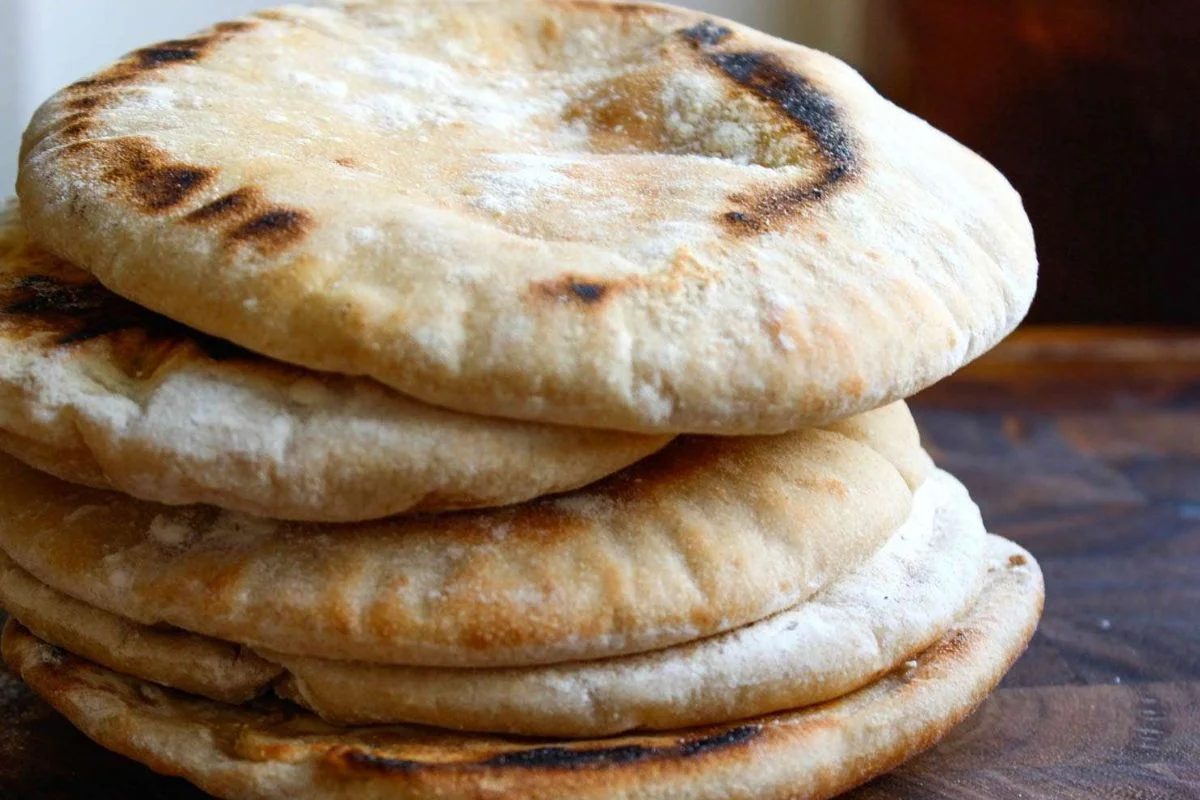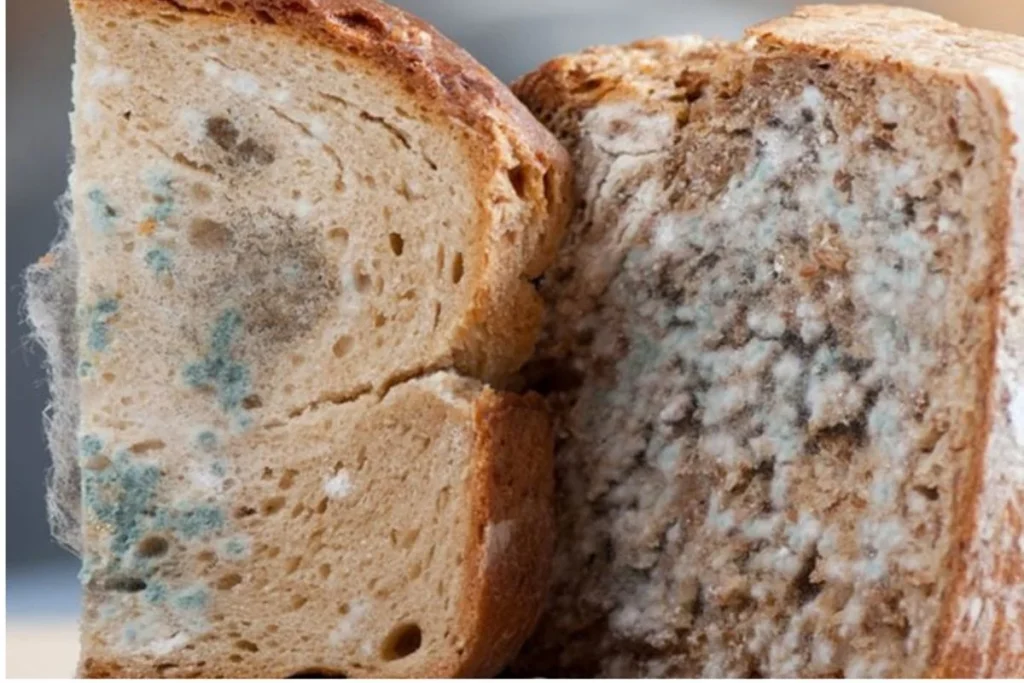
Fresh and Flavorful: Unveiling the Shelf Life of Pita Bread in Your Fridge
Are you a fan of pita bread? The soft, fluffy, and versatile bread that perfectly complements your favorite dips, spreads, and sandwiches? We all love the taste of fresh pita bread, but what happens when you have a surplus on hand? How long can you keep it in your fridge before it goes stale or loses its flavor?
In this article, we’re diving deep into the shelf life of pita bread and uncovering the secrets to keeping it fresh and flavorful for as long as possible. From the moment you bring it home from the store to the best storage practices, we’ll guide you through it all.
Whether you’re a pita bread enthusiast or just someone looking to make smarter choices when it comes to food waste, this article is a must-read.
Table of Contents
ToggleWhat is the Shelf Life of Pita Bread?
Pita bread, like any other baked goods, has a limited shelf life. On average, pita bread can stay fresh for about 3 to 5 days if stored properly. However, the actual shelf life may vary depending on several factors. It’s essential to understand these factors to ensure that you consume pita bread while it’s at its best. So, let’s take a closer look at what affects the shelf life of pita bread.
The first factor to consider is the ingredients used in making the pita bread. Commercially produced pita bread often contains preservatives that help extend its shelf life. These preservatives inhibit the growth of mold and bacteria, allowing the bread to stay fresh for a more extended period.
On the other hand, homemade or freshly baked pita bread without preservatives has a shorter shelf life and should be consumed within a couple of days.
Another factor that influences the shelf life of pita bread is the storage conditions. Pita bread should be stored in a cool and dry place, away from direct sunlight and moisture. Exposure to heat and humidity accelerates the staling process, causing the bread to become dry and lose its softness. Refrigeration can help extend the shelf life of pita bread, but it’s important to store it properly to avoid moisture absorption, which can lead to mold growth.
Proper Storage of Pita Bread
To maximize the shelf life of pita bread, proper storage is crucial. When you bring pita bread home from the store, it’s best to keep it in its original packaging. The packaging is designed to protect the bread from external factors that could affect its freshness. If the original packaging is damaged or not suitable for storage, you can transfer the pita bread to an airtight container or wrap it tightly in plastic wrap.
If you have excess pita bread that you won’t be able to consume within a few days, you can store it in the refrigerator. Before refrigerating, make sure the pita bread is completely cooled to prevent condensation. Place the bread in a resealable plastic bag or wrap it tightly in aluminum foil to keep it fresh. Remember to remove as much air as possible from the bag or foil to minimize moisture absorption.

Signs of Spoilage in Pita Bread
Despite your best efforts to store pita bread properly, there may come a time when it starts to spoil. It’s essential to be able to recognize the signs of spoilage to avoid consuming stale or moldy bread. Here are a few indicators that your pita bread has gone bad:
1. Mold growth: If you notice any fuzzy or discolored patches on the bread’s surface, it’s a clear sign of mold growth. Mold can be harmful to your health, so it’s best to discard the entire loaf if you spot any moldy areas.
2. Off smell: Fresh pita bread has a mild, slightly yeasty smell. If you detect any unusual or foul odors, it’s an indication that the bread has started to spoil. Trust your senses, and if in doubt, it’s better to be safe than sorry.
3. Texture changes: Stale pita bread becomes dry, hard, and loses its softness. If the bread feels tough or crumbly instead of soft and pliable, it’s a sign that it’s past its prime.
Storing Pita Bread: Fridge vs. Freezer
When it comes to preserving pita bread freshness, the decision between using the fridge or freezer depends on your preferences and usage.
In the fridge, pita bread generally stays good for up to a week, but it might lose some of its softness. The freezer, however, can extend its shelf life to several months without compromising quality.
To freeze pita bread effectively, wrap it in plastic wrap and place it in an airtight container. When ready to consume, thaw at room temperature or microwave briefly. Keep in mind that repeated freezing and thawing can affect the texture. Choose the storage method that aligns with your consumption patterns and enjoy your pita bread at its best.
Tips for Freezing and Thawing Pita Bread
Pita bread is a versatile and delicious staple that can be enjoyed in various dishes or as a convenient snack. Freezing pita bread can help extend its shelf life, allowing you to have it on hand whenever you need it. However, improper freezing and thawing can affect its texture and flavor.
To maintain the quality of your pita bread, follow these tips for freezing and thawing:
Freezing Pita Bread:
- Choose Fresh Pita: Start with fresh pita bread to ensure the best results after freezing. If your pita bread is already nearing its expiration date, it’s better to consume it or use it in recipes before freezing.
- Wrap Individually: Before freezing, wrap each pita bread individually in plastic wrap or aluminum foil. This prevents them from sticking together and makes it easier to thaw only the amount you need.
- Use a Freezer Bag: Place the individually wrapped pita bread in a resealable freezer bag. Squeeze out as much air as possible before sealing to prevent freezer burn and maintain the bread’s quality.
- Label and Date: Don’t forget to label the freezer bag with the date of freezing. This will help you keep track of how long the pita bread has been in the freezer.
- Freeze Quickly: Place the bag of pita bread in the coldest part of your freezer. Quick freezing helps preserve the texture and flavor. Avoid placing hot pita bread in the freezer, as this can raise the freezer’s temperature and affect other frozen items.
Thawing Pita Bread:
- Plan Ahead: Remove the desired number of pita bread from the freezer and place them in the refrigerator the night before you plan to use them. Slow thawing in the fridge helps retain the bread’s moisture and prevents it from becoming soggy.
- Room Temperature Thawing: If you need to thaw pita bread quickly, you can do so at room temperature. Keep the bread in its wrapping and let it sit at room temperature for a couple of hours. Make sure it’s not exposed to direct sunlight or heat sources.
- Reheat if Desired: If your thawed pita bread feels slightly dry or less soft, you can revive it by lightly toasting it in a toaster, oven, or on a skillet for a short period. Be careful not to overheat, as it can become too crispy.
- Avoid Refreezing: Once pita bread is thawed, it’s best to consume it within a day or two. Refreezing the thawed bread can affect its texture and taste.
By following these tips, you can ensure that your frozen and thawed pita bread retains its delicious taste and pleasant texture, allowing you to enjoy it in various dishes whenever you desire.

Extending the Shelf Life of Pita Bread
Now that you know how to identify spoiled pita bread let’s explore some tips to extend its shelf life. These simple practices can help you enjoy fresh and flavorful pita bread for a longer period:
- Freeze it: If you have a surplus of pita bread that you won’t be able to consume within a few days, freezing is a great option. Place the bread in a freezer bag or wrap it tightly in plastic wrap before placing it in the freezer. Frozen pita bread can stay fresh for up to 3 months. To thaw, simply leave it at room temperature or microwave it for a few seconds.
- Revive stale pita bread: If your pita bread has become slightly stale but is still edible, you can revive it by moistening it slightly. Sprinkle some water on both sides of the bread and heat it in a toaster or oven for a few minutes. This will help restore some of the moisture and make the bread soft and pliable again.
- Use it in recipes: Stale pita bread can be transformed into delicious dishes. Cut the bread into small pieces and bake them in the oven to make crispy pita chips. You can also use stale pita bread as a base for homemade breadcrumbs or croutons. Get creative and experiment with different recipes to give your pita bread a new life.
Creative Ways to Use Stale Pita Bread
Don’t let stale pita bread go to waste! Instead, try these creative ideas to make the most out of it:
1. Pita bread pizza: Use the stale pita bread as a base for a quick and easy pizza. Top it with your favorite sauce, cheese, and toppings, and bake it in the oven until the cheese is melted and bubbly. It’s a delicious way to repurpose stale pita bread into a satisfying meal.
2. Pita bread salad: Tear the stale pita bread into bite-sized pieces and toast them in the oven until golden and crispy. Toss the toasted pita bread with fresh vegetables, herbs, and dressing to create a flavorful pita bread salad. The crunchy texture of the bread adds a unique twist to your regular salad.
3. Pita bread croutons: Cut the stale pita bread into cubes and toss them with olive oil, salt, and your favorite seasonings. Bake them in the oven until crispy and golden. These homemade pita bread croutons are perfect for adding a crunchy element to soups, salads, or even as a topping for creamy dips.

Making Your Own Pita Bread at Home
There’s nothing quite like the satisfaction of baking your own fresh pita bread at home. Not only is it a rewarding culinary experience, but the aroma of warm pita bread filling your kitchen is truly inviting. Here’s a simple step-by-step guide to help you make your own delicious pita bread from scratch:
Ingredients:
- 2 ½ cups all-purpose flour
- 1 teaspoon salt
- 1 teaspoon sugar
- 1 packet (2 ¼ teaspoons) active dry yeast
- 1 cup warm water (about 110°F or 45°C)
- 1 tablespoon olive oil
Instructions:
- Activate the Yeast: In a small bowl, mix the warm water and sugar until the sugar is dissolved. Sprinkle the yeast over the water and let it sit for about 5-10 minutes, until it becomes frothy.
- Combine Dry Ingredients: In a large mixing bowl, combine the flour and salt. Create a well in the center and pour in the activated yeast mixture and olive oil.
- Knead the Dough: Mix the ingredients together until they form a shaggy dough. Turn the dough out onto a floured surface and knead for about 5-7 minutes, until the dough becomes smooth and elastic.
- First Rise: Place the kneaded dough in a lightly oiled bowl, cover it with a damp cloth or plastic wrap, and let it rise in a warm, draft-free place for about 1 to 1.5 hours, or until it doubles in size.
- Preheat Oven: Preheat your oven to 475°F (245°C) and place a baking sheet or pizza stone inside to heat.
- Divide and Shape: Once the dough has risen, gently punch it down to release the air. Divide the dough into small, golf ball-sized portions. Roll each portion into a ball and then use a rolling pin to flatten it into a round circle, about ¼ inch thick.
- Second Rise: Place the flattened dough circles on a lightly floured surface, cover with a cloth, and let them rest for about 15-20 minutes. This helps them puff up when baking.
- Baking: Carefully transfer a few dough circles onto the preheated baking sheet or pizza stone. Bake for about 3-4 minutes, or until the pita bread puffs up and forms a pocket. If desired, you can lightly brush the pita bread with olive oil before baking for added flavor and texture.
- Cool and Enjoy: Once baked, remove the pita bread from the oven and let them cool on a wire rack. They will deflate slightly as they cool. Slice the pita bread open along the edge to create a pocket, perfect for stuffing with your favorite fillings.
Conclusion
Pita bread is a delightful and versatile staple that deserves to be enjoyed at its best. By understanding the shelf life of pita bread and following proper storage practices, you can ensure that every bite remains fresh and flavorful. Whether you choose to store it in the fridge, freeze it, or repurpose stale pita bread into creative dishes, you can make the most out of this delicious bread.
So, next time you have pita bread on hand, remember these tips and savor its softness and flavor for as long as possible.
Lindsey Mackenzie
About me
Hi there! I’m Lindsey Mackenzie, the founder of Bake Smartly. Baking has been my passion since childhood, growing up in my father’s bakery. With Bake Smartly, I’m excited to share my love for all things sweet and savory. Join me on this delicious journey as we whip up scrumptious treats and sprinkle joy into every bite!






